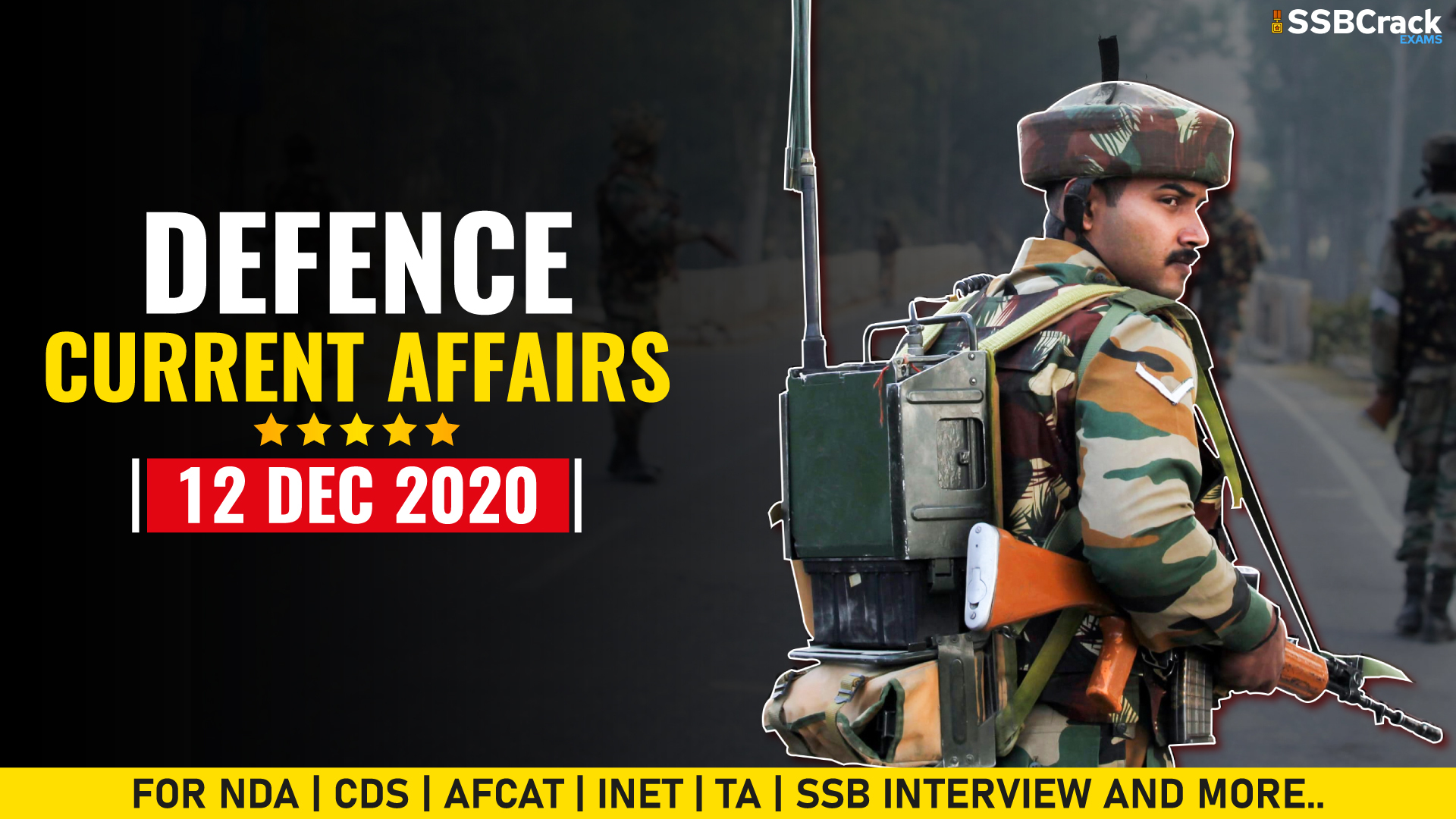Indian Military Academy, Dehradun POP
- 392 GCs, including 322 Indian and 70 from friendly foreign countries, will graduate from the academy. Due to the ongoing Covid-19 pandemic, the IMA Dehradun will allow only two guests of each gentleman cadet (GC) to attend the POP.
- Motto of the academy: VEERTA AUR VIVEK.
Officers’ Training Academy, Gaya POP
- The 49-week course at the OTA prepares graduates for all branches of the Army, except for the Army Medical Corps. OTA Gaya was set up in 2011.
- Motto of the academy: SHAURYA – GYAN – SANKALP.
India, Uzbekistan sign nine pacts at virtual summit, set to widen counterterror partnership
- Prime Minister Narendra Modi and Uzbekistan President Shavkat Mirziyoyev on Friday agreed to widen their counter-terror partnership, and “underlined the need for every country to ensure that its territory is not used to launch terrorist attacks against other countries”.
- New Delhi and Tashkent at a virtual summit also decided to explore connectivity routes via International North–South Transport Corridor (INSTC) – a 7,200-km multi-mode ship, rail, and road freight route connecting India, Iran, Azerbaijan and Russia – and Chabahar port in Iran, according to a joint statement issued after the summit.
- Modi and Mirziyoyev strongly condemned terrorism in all its forms and manifestations and reaffirmed the determination of their countries to combat this menace by destroying terrorist safe-havens, networks, infrastructure and funding channels, the statement said.
- The two countries agreed to strengthen cooperation between the law enforcement agencies and special services, including under the framework of the Uzbekistan-India Joint Working Group on Counterterrorism, officials said.
- Uzbekistan is a key partner of India in Central Asia. The countries signed nine pacts across development and economic sectors at the summit.
- They agreed to intensify cooperation under the bilateral intergovernmental agreement concluded in October 2018 on mutual cooperation in combating illicit trafficking in narcotic drugs, psychotropic substances and precursors as well as an Interagency Agreement signed in November 2019 on cooperation in the field of combating transnational organised crime and international terrorism.
- The leaders discussed the situation in Afghanistan and noted that establishment of peace and stability in that country is of great importance to the security and stability of the entire region. They called for the settlement of the Afghan conflict on the principle of Afghan-led, Afghan-owned and Afghan-controlled peace process. India and Uzbekistan expressed their unanimity in their support for a united, sovereign and democratic Islamic Republic of Afghanistan, according to the joint statement.
- Modi welcomed the Uzbek proposal to hold a trilateral dialogue among India, Iran and Uzbekistan to promote connectivity through the Chabahar port. India also requested the Uzbek side to consider joining the international North-South Transport Corridor which would add to the overall improvement of connectivity in the larger Eurasian space.
- India also confirmed approval of $448 million line of credit for four developmental projects in Uzbekistan in the fields of road construction, sewerage treatment and information technology.
- It may be noted that Delhi has established an India Room in the Armed Forces Academy of Uzbekistan. India is currently assisting development of an IT Room in the academy.
- Modi and Mirziyoyev agreed to fast-track conclusion of ongoing joint feasibility study that will pave the way for negotiations on a preferential trade agreement.
- The leaders also agreed that both sides should work towards an early conclusion of a bilateral investment treaty to facilitate investment promotion and protection for further improvement of trade and economic cooperation.
- “The sides noted the prospects for greater opportunities in the free economic zones of the two countries, including in the Uzbek-India free pharmaceutical zone in the Andijan region,” the joint statement said. “The Uzbek side welcomed the opportunities in India for investing/manufacturing under the ‘Make in India’ flagship programme.”
- Uzbekistan and Kazakhstan are India’s key partners in Central Asia where China has made major inroads. India needs to increase its footprint in the resource-rich region to balance China’s overarching presence in Eurasia.
Amid China stand-off, Mountain Strike Corps to get its own artillery brigade
- Amid the ongoing tensions with China in Eastern Ladakh, the Panagarh (West Bengal)-based Mountain Strike Corps (MSC) is set to get its own artillery brigade.
- An artillery brigade is already attached to the Mountain Strike Corps’ only division, but the new brigade will be attached to the Corps.
- In military parlance, a division is typically constituted of three brigades, which usually consist of armoured, infantry and artillery units besides other elements. Two or more divisions then make up a corps.
- Sources in the defence and security establishment said work has already started on raising the new artillery brigade, which will see larger deployment of the Ultra Light Howitzers besides other guns.
- Although the grand plans of a full-fledged Mountain Strike Corps, which would have involved over 90,000 troops and expenditure of over Rs 64,000 crore across an eight-year period, was put on a back burner in 2016 due to budgetary constraints, the ongoing Ladakh conflict has shown how useful they can be, sources said.
- The Mountain Strike Corps has only one division as of now. Sources, however, said there was no progress in the potential raising of another division, which is meant to be based in Pathankot.
- The developments come even as the Army is reportedly looking at converting some of its fighting formations into dual-tasked ones, which would allow them to fight against both China and Pakistan.
A critical component in mountain warfare
- Sources said the new artillery brigade with the corps would be useful as the infantry, artillery and Air Force are critical for mountain warfare.
- “The armoured elements in the heights are possible in Ladakh and some areas of Sikkim but not in the rest of the terrain. Air Power is essential but it is dependent on weather. The only thing available to act as a punisher round the clock in the mountains are the artillery,” a source said, while explaining why the guns were important. Sources explained that while in the plains, 1:3 is the ratio needed for an offensive infantry operation, it increases to 1:9 in the mountains.
- “So to counter one enemy in the heights, you would need nine of our own for offence. The dynamics of mountain warfare is very different,” said a second source.
The Mountain Strike Corps
- Although originally envisaged way back in 2000, the Mountain Strike Corps was finally sanctioned only in 2013. However, the raising of the new corps, which was to be manpower- and equipment-intensive, hit a financial roadblock.
- While the corps was supposed to have two divisions instead of the regular three, only the Panagarh-based 51 Division was raised.
- Plans for raising of the second division were put on hold due to a paucity of funds. It was then thought that the MSC can be divided into Integrated Battle Groups (IBGs), a new concept brought in by then Army Chief Gen. Bipin Rawat.
- The Mountain Strike Corps, also known as the 17 Corps, debuted last year in the massive exercise called “HimVijay”, which also saw the IBGs concept in action.
GRSE to launch high-tech stealth warship next week
- Garden Reach Shipbuilders and Engineers, a state-owned shipyard, will launch the first of three stealth frigates for the Indian Navy on Monday (December 14).
- The three ships belong to the Project 17A class of frigates; The Mazagon Docks Limited in Mumbai is building four ships of the same class.
- The Narendra Modi government had cleared the construction of the seven warships in February 2015 with an estimated budgetary allocation of Rs 50,000 crore. Last year, Mazagon Docks launched the first ship of the Project 17A class, to be called the INS Nilgiri.
- CMD of GRSE retired rear-admiral V.K. Saxena gave details of the project in an interview to The Times of India earlier this week.
- “The order for the three stealth frigates at a cost of nearly Rs 19,289 crore is the biggest ever for GRSE. The ships… have a displacement of 6,670 tonnes each. They will have the most advanced, state-of-the-art sensors and armaments on board. The ships will also have advanced stealth features. These frigates are among the best in the world and the whole country and West Bengal as well as Kolkata should be proud of this achievement.”
- The Project 17A class frigates will be the most advanced class of major surface warship in the Indian Navy in a decade’s time. Though the design of the Project 17A class is derived from the preceding Shivalik class frigate, the former uses more features to reduce its chance of radar detection. The Project 17A uses a ‘flush deck’ layout in which the deck has a uniform, continuous layout from bow to stern, which reduces its radar cross-section.
- The Project 17A class frigates are being built using a ‘modular’ technique in which different parts of the ship are built separately and welded together. Modular construction allows for both increased pace of construction of multiple ships and also ease of incorporating upgrades.
- The Project 17A will have an armament similar to the Kolkata class destroyers, including BrahMos supersonic surface-to-surface missiles to attack ships and shore targets and the Indo-Israeli Barak-8 surface-to-air missiles. While the Project 17A will have the same EL/M-2248 radar to acquire targets for the Barak-8 missiles as the Kolkata class has, it will also have an advanced secondary radar.
- There has been speculation the Project 17A will have the LTR-25 ‘Lanza’ radar from Spanish company Indra. The LTR-25 has a range in excess of 400km and can detect a large number of aerial targets, including ballistic missiles.
- The Project 17A will also have torpedoes and rockets to hit submarines and rapid-fire guns to destroy anti-ship missiles as well as a heavy main gun to engage ships and coastal target.
ISRO to launch CMS-01 communication satellite on 17 December 2020, maiden SSLV launch to follow
- Just over a month after the first launch mission of the year, the Indian Space Research Organisation (ISRO) is gearing up to launch a communication satellite aboard India’s workhorse Polar Satellite Launch Vehicle (PSLV) on December 17. The launch will take place at about 3.41pm.
- The mission, which was to take place on December 14, was postponed by a few days owing to adverse weather conditions.
- This will be the 42nd communications satellite to be launched by the space agency and will provide coverage over the entire country for disaster management and satellite internet connection.
- The satellite, named CMS-01, will be the first in a new series of communication satellites by India after the INSAT and the GSAT series. The previous satellite launched by ISRO also had an altered nomenclature; it was called EOS (Earth Observation Satellite) 01. Previous earth observation satellites were thematically named by the space agency depending on their task or the kind of instrumentation carried. EOS-01 had previously been named RISAT-2BR2, short for Radar Imaging Satellite (RISAT).
- The new satellite will replace the current GSAT-12 in orbit, launched in 2011.
- The next much anticipated mission of the space agency is the maiden flight of the newly developed Small Satellite Launch Vehicle (SSLV), with the capacity to launch a light 500kg satellite in the lower Earth orbit.
- The new rocket will cost about Rs30 crore, compared to the Rs120 crore it costs to manufacture the currently used PSLV. It can also be assembled by a team of six within seven days, in comparison to a team of 600 people and a few months it takes to assemble a PSLV.
- The SSLV has been developed by ISRO mainly for commercial launches.
- Before the pandemic, India was only able to complete one satellite mission—GSAT-30—this year, launched by the international launcher Arianespace from Kourou, French Guiana, in January.
- The space agency had nearly 20 satellite and launch missions planned for the year, including the big-ticket Aditya L1, India’s first mission to the sun. The purely scientific mission would have seen ISRO sending a satellite 1.5 million km away from the Earth to the L1 point. The L1, or Lagrangian point, between the Earth and the Sun, is where the gravitational pull of both the bodies on the satellite is equal to the centripetal force needed to keep the satellite in orbit.
- The first unmanned flight under the Gaganyaan mission was also scheduled for December 2020.
- A third Chandrayaan mission with just a lander and rover was to take place either in late 2020 or early 2021. All the missions were delayed due to the pandemic.
First separation tests of Safran’s 1,000-kg AASM “Hammer” air-to-ground weapon on Rafale a success
- The new 1,000-kilogram version of the AASM “Hammer”* air-to-ground modular weapon, designed and produced by Safran Electronics & Defense, successfully completed its first two inert separation tests from a Rafale omnirole fighter. The tests were conducted at the French defense procurement agency DGA’s Cazaux flight test center in southwest France.
- The separation dynamics observed during the two firings were in line with simulations. These industrial validation tests were designed to check the correct sequencing of all components of the wing hardpoint and the weapon, as well as the wing deployment mechanism on the range extension kit. Following these successful separation tests, the first live firing tests will be conducted in 2021 as part of the final development and qualification of the 1,000-kg AASM.
- The 1,000-kg AASM features a guidance kit derived from the 250-kg version and a specific range extension kit. The 1,000-kg AASM has the same modular characteristics as the 250-kg version with the BLU109 penetrating bomb body and MK84 conventional body, as well as its close functional integration with the Rafale, especially for fire control system and configuration options.
- This new weapon will give the Rafale an enhanced strike capability, with payload configurations of up to three 1,000-kg AASMs per aircraft. Its standoff range is also extended, thanks to the integrated propulsion system.
- Developed and produced by Safran Electronics & Defense based on existing bombs from 250 kg to 1,000 kg, the AASM Hammer family is the air-to-ground weapon of choice for the Rafale. The 1,000-kg version rounds out the AASM range. Qualification is planned for 2022, leading to service entry on the new Rafale F4 standard.
India delivers strong message on ties with Russia; hopes its national interests are well understood by partners
- India, close on the heels of Russian Foreign Minister’s comments on US trying to create pressure on India on Military Technical matters, on Wednesday emphasised that it pursues an independent foreign policy based on national interest and hoped that this is well understood & appreciated by all partners in what can be viewed as a message against any moves to sanction Delhi over arms purchases from Moscow.
- “We have seen the comments of the Russian Foreign Minister on India as part of his remarks during the general meeting of the Russian International Affairs Council on 8 December 2020,” MEA spokesperson told reporters.
- India enjoys long-standing relations with Russia characterized by a Special & Privileged Strategic Partnership. This year marks the 20thanniversary of our strategic partnership with Russia, the spokesperson said, adding, “Our relations with Russia stand on their own merits including in the sphere of Military Technical Cooperation.” These comments are aimed at dispelling any apprehensions that India is under pressure from USA to undermine its ties with Russia.
- “As unequivocally outlined by PM during his speech at the Shrangi-La dialogue in June 2018, India does not see the Indo-Pacific region as a strategy or as a club of limited members or as a grouping that seeks to dominate. It is not directed against any country. It stands for a free, open and inclusive region,” the spokesperson said in what can be viewed as assuring Russia that its Indo-Pacific construct is independent of Indo-Pacific visions of other countries.
- “India has always pursued an independent foreign policy based on its national interest. India’s relationship with each country is independent of its relations with third countries. We hope that this is well understood and appreciated by all our partners,” the spokesperson said in a message against any moves to impose sanctions on account of defence purchases from Russia.
- CAATSA threatens to sanction India over S-400 missile defence system. India had earlier asserted that it will go ahead with the purchases and first unit is expected next year.
- Earlier this week Russian Foreign Minister Sergey Lavrov accused the West particularly the USA of trying to undermine Moscow’s close and privileged ties with India in what has been first such comments from Moscow in recent years.
- The veteran Foreign Minister had further alleged that the US is putting very tough pressure on Delhi to undermine Indo-Russian cooperation in the area of Military Technical Cooperation (MTC). Taking a dig at the Indo-Pacific concept, Lavrov also accused the West of engaging India against China through the Qaud and Indo-Pacific construct.
QUICK REVIEW
- Modi welcomed the Uzbek proposal to hold a trilateral dialogue among India, Iran and Uzbekistan to promote connectivity through
- Chabahar Port
- Gwadar Port
- Dubai Port
- Sabang Port
ANSWER: A
- Which Mountain Strike Corps is going to get its own artillery brigade?
- XVII Corps
- XVI Corps
- XV Corps
- XIV Corps
ANSWER: A
- XVII Corps is based in
- Panagarh
- Raidurg
- Chennai
- Jammu
ANSWER: A
- First ship of Project 17A class
- INS Satpura
- INS Sahyadri
- INS Nilgiri
- INS Kavaratti
ANSWER: C
- Which communication satellite that will be launched on 17 December 2020 will replace the current GSAT-12 in orbit, which was launched in 2011?
- CMS – 01
- HMS – 02
- CMS – 02
- HMS – 01
ANSWER: A
- The 1000-kg version of “Hammer” air-to-ground weapon is made by
- Astra Microwave
- Safran Electronics & Defense
- Alpha Design Technologies
- Kalyani Group
ANSWER: B
- First separation tests of Safran’s 1,000-kg AASM “Hammer” air-to-ground weapon on Rafale were conducted at
- CASA Flight Test Center, Getafe Air Base, Spain
- Bombardier Aerospace Flight Test Center (BFTC), Kansas, US
- Cazaux flight test center in southwest France
- Airbus Defence and Space Flight Test Center, Manching, Germany
ANSWER: C
















